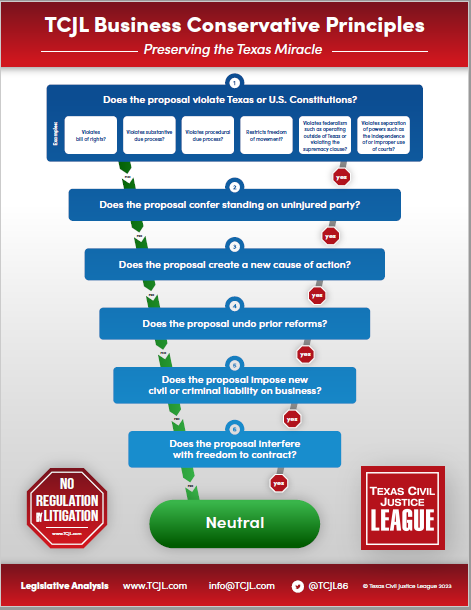 For the second time in just two weeks, the Corpus Christi Court of Appeals has chastised a Hidalgo County Court judge to follow the law in a windstorm case.
For the second time in just two weeks, the Corpus Christi Court of Appeals has chastised a Hidalgo County Court judge to follow the law in a windstorm case.
In re Trisura Insurance Company, Eagle 1 Adjusting LLC, and Thomas Walter Theophilus Maretzki (No. 13-25-00139-CV; July 25, 2025) arose from a coverage dispute under a homeowners policy. Plaintiff submitted a claim to her insurer, Trisura, alleging significant damage to her roof and other parts of her home as the result of a windstorm. Acting through Wellington Claim Services, its third party administrator, and its adjuster Maretzki, Trisura inspected the property and determined that part of Plaintiff’s claim relating to wind damage to her roof and collateral damage to her fence were covered, but wear and tear damages to the roof and interior damage caused by wind-driven rain were not. In September 2023 Plaintiff’s counsel sent presuit notice and sent a demand letter to Maretzki. Plaintiff filed suit in 2024 in Hidalgo County Court at Law No. 7 against Eagle and Maretzki, alleging improper adjustment of her property damage claim, asserting negligence, violations of the Texas Insurance Code, and violations of the DTPA. Trisura was absent from the list of defendants.
Shortly after suit was filed, Trisura elected to assume all liability of its agents under § 542A.006. Insurance Code. Wellington also informed Plaintiff’s counsel of Trisura’s exercise of its right to appraisal under the insurance policy. Trisura duly filed a plea in intervention, alleging that it had originally issued the policy, hired Eagle 1 and Maretzki as its agents, determined partial coverage, and issued payment under the policy. Trisura attempted to assume liability for Plaintiff’s claims as its sole or shared responsibility based on the contention that all of her claims were rooted in the policy. Additionally, it filed a motion to dismiss Plaintiff’s causes of action against the adjusters, both of whom filed a separate motion to dismiss the claims as well. The following day Plaintiff filed notices of intent to take the oral depositions of Maretzki and Eagle 1. The adjusters responded by filing motions to quash these depositions and for protective relief.
Plaintiff then filed a third amended petition, altering her negligence claims so that they reflected only the tort claims she pursued against Eagle 1 and Maretzki and “clarifying” that no breach of contract claims or policy benefits were being pursued against the insurer. Plaintiff filed an Emergency Motion to Compel Depositions and for Sanctions, as well as a motion to strike Trisura’s plea in intervention and its response. Plaintiff alleged that the insurer had attempted to “manufacture a controversy.” A flurry of responses and supplemental replies ensued, but as a result of the hearing on Plaintiff’s emergency motion, the trial court denied the insurer’s motion to dismiss. The insurer sought mandamus relief.
In an opinion by Justice Peña, the court of appeals granted the petition in part and denied it in part. The insurer’s first issue asserted that the trial court had abused its discretion by denying its plea in intervention and granting Plaintiff’s motion to strike the intervention. The court’s decision boiled down to determining whether Trisura had a justiciable interest in the lawsuit. The court found in the affirmative. Trisura had elected to accept liability pursuant to § 542A.006 and established that its involvement was crucial in protecting their interests in this case. The court rejected Plaintiff’s argument that the insurer could not invoke § 542A.006 because it wasn’t a named party, observing that the election merely shifts liability for causes of action against agents, it doesn’t extinguish them.
The court pointed to its recent opinion (which we reported a few days ago) in In re Certain Underwriters at Lloyd’s, London, 2025 WL 1914403, in which it held that the insured’s claims “although carefully crafted to avoid any causes of action pertaining to breach of the insurance policy itself, [were] factually premised on [the] insurance policy and [the insurers’] rejection of the [insureds’] claim.” Additionally, permitting the insurer to intervene “would not excessively multiply the issues in the case because the causes of action, defenses, and relevant facts all surrounded the alleged damage to the insureds’ property, the cause of that damage, the adjusters’ evaluation of the damage, and the insurers’ denial of the claim.” Any liability on the part of the adjusters was “in essence, inextricably interwoven with [the insurers’] insurance policy and [their] denial of the [insureds’] claims.” In short, the intervention “would not expand the scope of facts and issues relevant to the case” (citations omitted).
In their second issue, the adjusters asserted that the trial court abused its discretion by denying their motions to dismiss Plaintiff’s claims against them because Trisura had twice elected to assume liability under § 542A.006. They argued that the trial court had a mandatory duty to dismiss the action with prejudice. The court of appeals sustained this issue as well.
As to the third issue regarding the depositions, however, the court of appeals denied relief. The adjusters asserted that the trial court had again abused its discretion by denying its agent’s motions to quash and for protective relief regarding the depositions of Maretzki and Eagle 1’s corporate representative. Because a party may seek discovery from non-parties and parties alike, and that no authority mandates that discovery be stayed pending the completion of appraisal, the court overruled this issue.
This was the second case in a two-week period in which the court of appeals had to mandamus the same trial court, Hidalgo County Court No. 7, on the same issue. The plaintiff’s counsel in both cases were also the same. We hope they get the message.
TCJL Intern Satchel Williams researched and prepared the first draft of this article.












